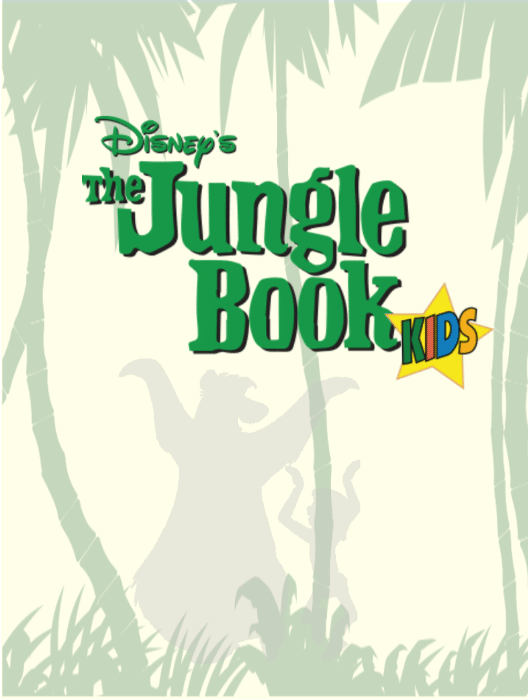
Many just refer to it, even Disney themselves, as “Aristocats” with a lowercase “C”. Much like The Jungle Book, the in-film font for The Aristocats wouldn’t be used anywhere else… Wait, hold on… Are we supposed to spell it as “AristoCats”? A few posters would, but video covers? Not so much.
#Jungle book font movie
I feel that the first and third print font Disney used for this movie are some of the best for a Disney animated feature, then or now… When a typeface really captures the setting and the overall mood of a movie, it has really done its job. The same font was re-used for the recently-released Disney Movie Club exclusive edition. Not the best font for this movie, but not my least favorite. While a similarly simplistic serif font is used here, the letterforms are given that sort of texture and feel that puts them closer to the 1967 poster font than what we see on the 2007 cover. The 2014 Diamond Edition cover fares better. While not bad on the eyes, it’s just… There. “The” is in all-caps… It’s just kind of a basic serif font for a movie that had much more distinctive type in the past.

The words “Jungle” and “Book” are way too close, too. The Jungle Book then got the Platinum Edition treatment in 2007, a new logo was introduced, one that’s kind of dull in comparison to the previous ones. The first video release from 1991 used the 1967 font as well, making the border stroke a little heavier than what we saw on the 1990 poster.įor the 1997 release (and 1999 DVD), the same idea is followed, but the type now looks a little crunchier (is that the word I’m looking for?), and the “The” is significantly different… A timeless, fun typeface.Īlso, how often do you see one of the vultures on a poster or video cover for this movie? It looked great in the ’60s, it looked great in the early ’90s as well. Especially the ruins, the throne of which is featured here.įor the final North American theatrical re-release in 1990, they went back to the original poster font and modernized it a bit. Again, that typeface just suggests a big adventure out in an unknown land… Not quite the film itself, for it is more of a comedic road movie with jungle animals sharing the names and some aspects of the Kipling characters, but the setting? Yes indeed. Quite long-lasting! Even the remake’s logo is heavily inspired by this one. I also saw it, years ago, in an illustrated collection of Disney stories. This one also has a very jungle/adventure feel to it, too! In fact, this logo was later used for a 90s edition of the soundtrack and the direct-to-video sequel. The 1984 re-release poster goes for a new font altogether… Very wavy and curvy, very much like real-life trees and their branches, but given enough flair to stand out. The letterforms really match up with the tree in the poster, as that is how the trees look in the film’s art direction. I’ve always loved the 1978 poster for the film, and that font really adds to it. The 1978 re-release poster aimed for something equally stylish, but something a little more formal. Looks very “rocky” and jungle-ish, but also hints at the film’s jaunty, swingin’ music, its colorful cast… If we separate the logo itself from the poster, obviously because this is after all about the typography itself… It also aligns with the era it was made in, the mid-to-late ’60s. The in-film logo feels like it belongs to a more serious take on the material, but this above? Perfectly suited all-around. See, that’s a little more fun and happenin’. The original 1967 release poster’s logo reflects the nature of the film better, I think…

While it doesn’t quite align with the more comedic nature of this Kipling adaptation, it is an appealing and somewhat mysterious font… What’s inside that book?

Anyways, the font totally fits the book cover and the setting of the film. This book and font are reproduced for the end credits of Jon Favreau’s 2016 remake, but beyond that… Nowhere else. This typography, as expected, doesn’t really appear anywhere else.

#Jungle book font series


 0 kommentar(er)
0 kommentar(er)
